How to Crack Climb: 11 Tips to Help You Get Addicted
Table of Contents
We here at Hike The Planet! are addicted to Crack. Crack Climbing that is. We absolutely love it. Cracks are fun to climb, and are just plain aesthetic, often forming an inspiring line up a rock face. There are few better feelings than finding great jams in quality cracks. These days, we find ourselves seeking out crack routes more than any other.
Cracks require a different set of techniques than your typical sport route or boulder problem. The hand holds are different (read: not there, sort of) and the style of movement will seem counterintuitive.
If you are coming from a sport climbing background, like we did, then the beginning of your crack journey will be fraught with frustration, pain, and a hefty learning curve. To help you out, we compiled the lessons and techniques we have learned. Take a page from our book, and check out 11 Ways To Learn How To Crack Climb!
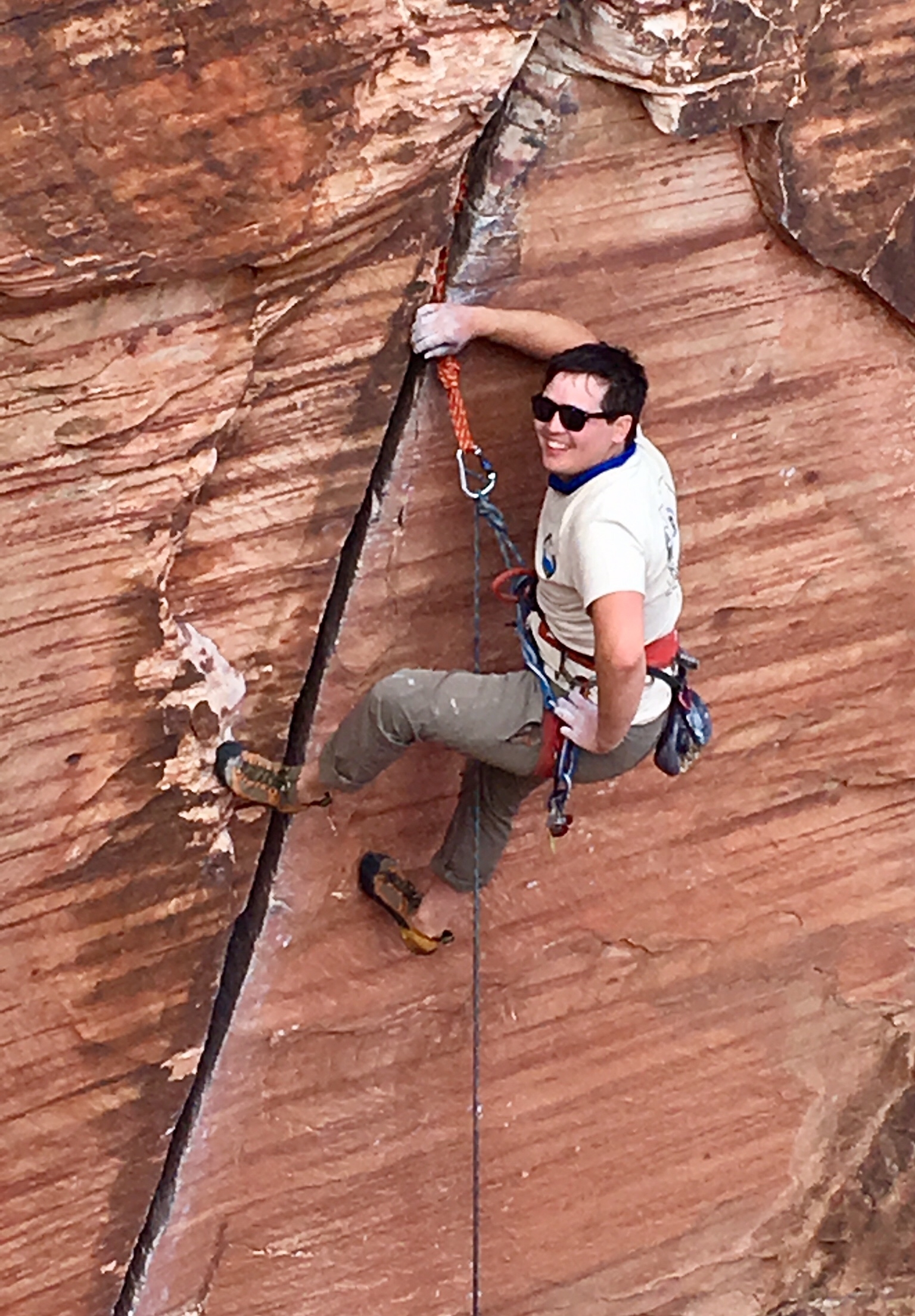
Related: Trad Vs. Sport Climbing
1. Forget Everything You Know about Rock Climbing
Imagine your typical climbing hold. You may picture a sloper, a crimp, or maybe a jug. Then, imagine a sequence of these holds going up a boulder or a cliff face. Next, picture yourself climbing this sequence. Maybe it requires good balance and technique, or some powerful dynamic moves.
You have spent hundreds of hours in the gym and out at the crag trying to perfect these moves, learning these holds, and training your body to be strong, agile, and flexible. Now, take everything you just imagined, and throw it out the window.
Crack Climbing, in many ways, uses techniques and movements opposite of those typically used in face climbing. Coming from a sport and bouldering background, the ideas and techniques behind crack climbing at first seemed counterintuitive. Where a sport climb may utilize the holds available on the wall, cracks occupy the space where there are no holds. Effectively, you are using empty space to climb higher.
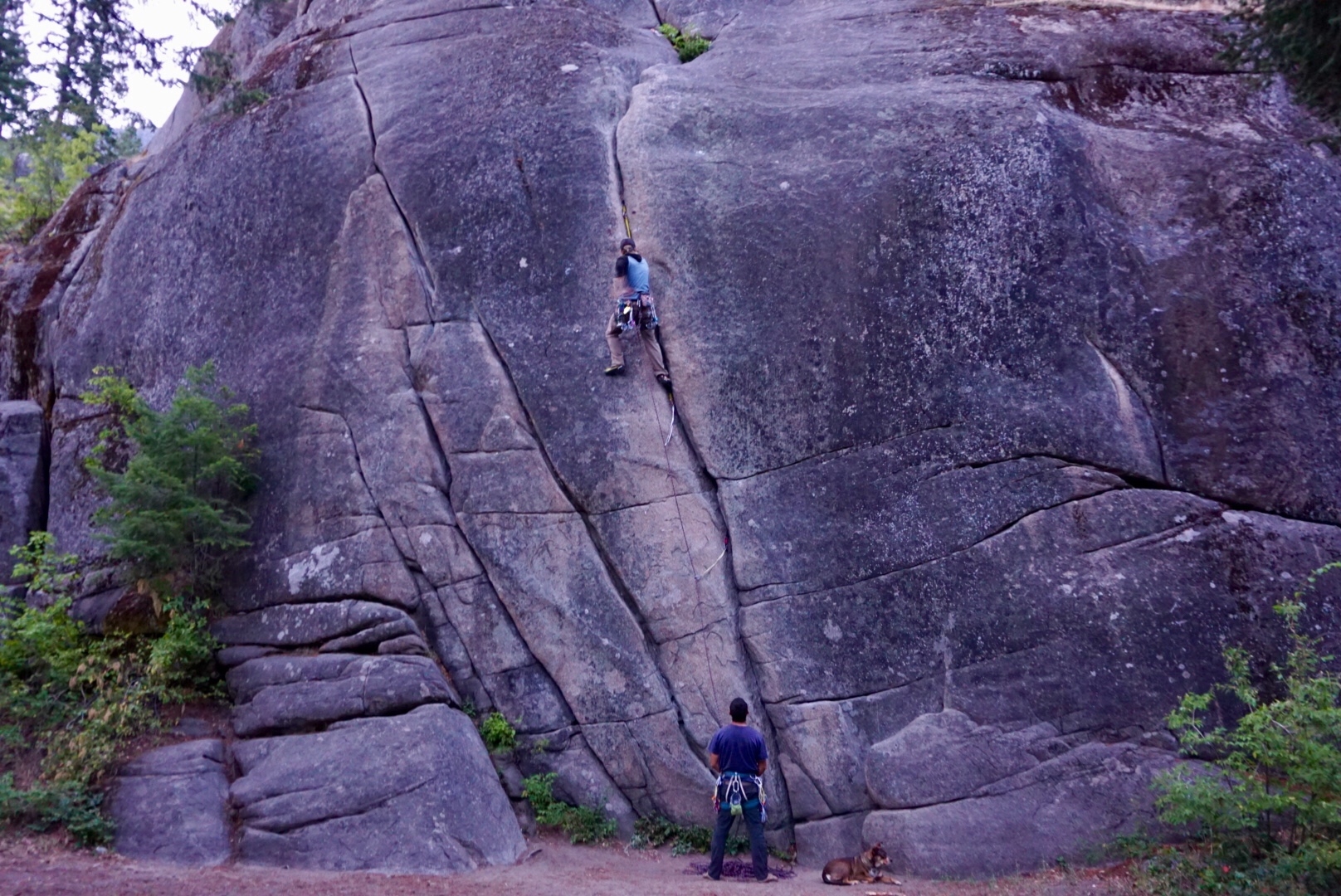
Take, for example, your typical hand crack. This size will fit your hands and feet perfectly, and so the climber will utilize the crack as both a hand and foot hold. The climber is not grabbing anything, choosing instead to harness friction, gravity, and body position to stay in the crack. A face climb may feature a number of holds-a crimp here, a high foot there, and maybe a flagging move to help balance the body. These holds must be used in the correct sequence in order to maintain balance, so that the climber is not leveraged off of the wall.
The Duality of Crack Climbing, and the Learning Process
Upward movement in a perfectly straight splitter crack will be hand over hand, foot over foot in a vertical direction. You alternate thumbs up to thumbs down, a technique known as swimming. Between each upward movement, you rest onto your jams, straightening your arms, bending at your knees, and settling your weight as you drop the lower back. Rarely is this pattern of movement ever encountered in other schools of climbing. On a face climb, this sort of movement would cause you to swing off of the wall, or to “barn door”.
Yet, when used in a crack, this mechanical way of moving feels very natural. The climber will settle into this pattern, learning it’s efficiencies. Soon, they will develop two different climbing styles-one for cracks, and one for everything else. When I set out with the intention to learn how to crack climb, everything about it felt wrong. The basic “in line” position in a crack went against all I had learned about climbing. I sought hand holds where the were none, frustrating myself, but altogether strengthening the learning process. This was the first mental pitfall that I needed to overcome to learn even basic crack technique.
In summary, approach crack climbing with the same student mindset as you had when you were first learning to climb. Recall how even the easiest gym problems would shut you down, and how it all figured into the learning process. Begin this journey with an empty mind, and do not judge your shortcoming and mistakes. You will find it easy to harshly criticize yourself, getting yourself down. In reality, every good crack climber has made the same mistakes, and gone through a similar process. Just keep practicing, remembering to detach your identity from the climbing process. Most importantly, remember to have fun, and find pleasure in the process. This will pay off, and you will become a better, well rounded rock climber.
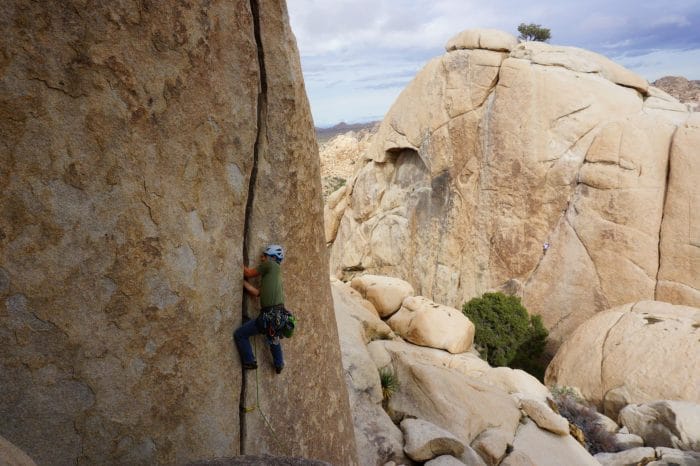
2. Accept The Pain
Crack Climbing is painful. You will struggle, sweat, and bleed as you wedge and twist your hands and feet into a crack. This is the first hurdle that the novice crack climber must overcome if they wish to learn.
This pain can persist throughout your crack addiction. With practice, and some mental fortitude, you will get used to the pain. In my experience, excessive pain when jamming hands or feet can mean that there is something to be desired in your technique. The right tools for the job will make your experience better. Crack Climbing shoes will help your feet, and tape gloves will keep your hands in better condition.
3. Learn The Different Types of Crack Climbing Jams
No two cracks are alike. There are finger cracks, hand cracks, off widths, and chimneys. There are smooth cracks, flared cracks, pods, and shallow cracks. Each of these variations require learning a different type of jam in order to effectively climb them. Just as you needed to learn how to use crimps, slopers, jugs, and side pulls, each of these jams will require practice, experimentation, and differing body positions to get right.
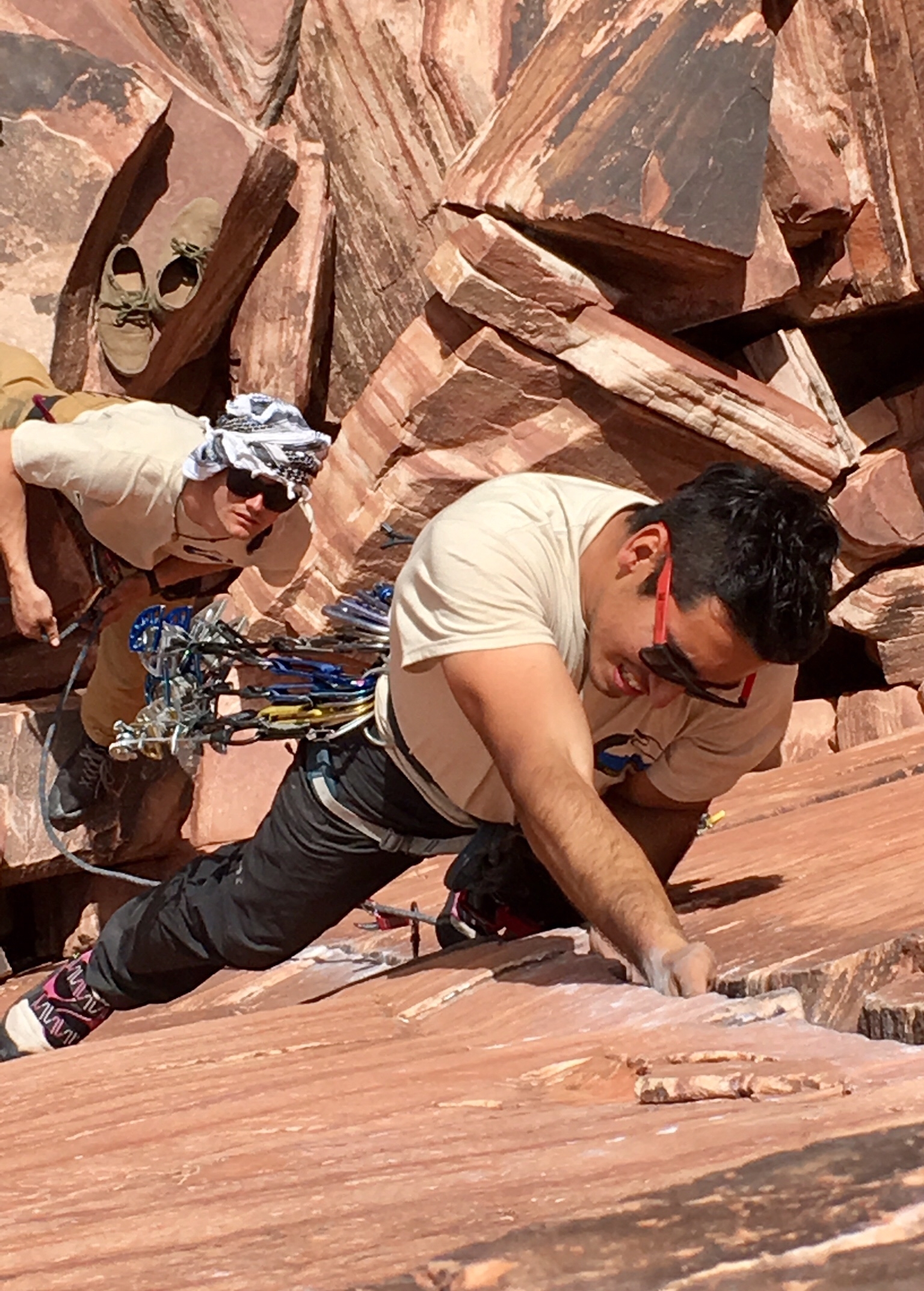
The easiest jam to learn, for most, is the basic hand jam. I highly recommend perfecting this jam before anything else. The hand jam is the jug of the crack climbing world. Finding a “sinker” hand jam in a good crack is a great feeling. Some of the best cracks in the world are simply composed of hand jams for hundreds of feet. Where there is a perfect hand crack, the footwork tends to come just as easily. By learning this basic jam, it introduces the novice crack climber to the basic concepts of wedging and camming your hands, which are techniques applied when climbing all other sizes of cracks.
The rest of the jamming sizes are trickier to get down, but they do come with practice. Finger cracks often involve twisting and contorting your fingers to be able to support your body weight. Off width technique can vary widely, but the basic concept of crack climbing is applied to wedging your arms, legs, hand, and sometimes torso to be able to make upward progress. Offwidth climbing is considered by many to be an acquired taste.
4. Difficulty Varies with The Size of Your Hands
Cracks come in all sizes, and fit everyone differently. Like shoes, you need to find the right size for you. Unlike shoes, you can learn how to fit different sizes just as well. Not everyone has the same size hands. Some have delicate fingers, while others have big meaty mitts. I crack climbing these differences don’t matter.
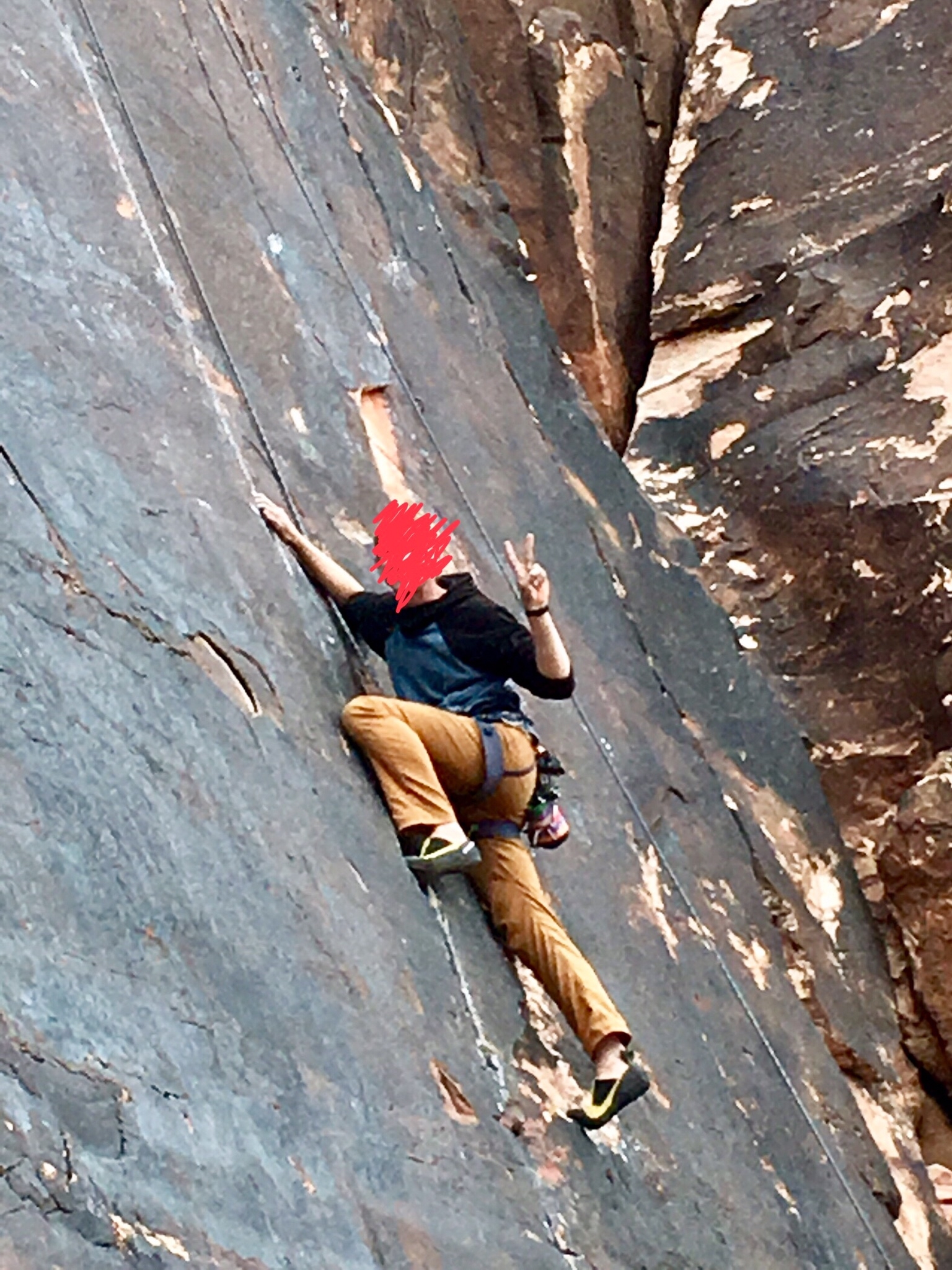
A perfect #2 hand crack may be cruiser for one climber, but it may be an offwidth mess for someone else. Visa Versa, the first climbers rattle fingers will be the latter’s easy hand crack. If you are struggling on a size that others are climbing with ease, then take a step back, and try a different crack. Come back to it when you are more experienced, and maybe it will go much easier than you expected.
5. Understand Crack Climbing Footwork
Proper crack climbing footwork can come in several flavors. If the crack is sized right, as in a hand or fist crack, it is easy to fit your foot to gain a solid stance. Fist cracks are often perfectly sized for feet, while hand cracks often require a little twisting to get the fit just right.
As soon as the crack become smaller or larger, the climber needs to get a little more creative with their footwork. If the crack is finger sized, proper footwork usually means a combination of finding useable face holds, and desperate smearing. If the crack errs on the larger size of fingers, a toe can sometimes be wedged in. Otherwise, revert back to face climbing technique.
A larger crack, as in an off width or squeeze chimney, follows the same, awkward motif as the rest of the body. Do whatever you can so that your feet can gain purchase. Sometimes, climbers “bridge” the offwidth with the length of their foot. Use whatever works. Failing that, look for foothold both within, and outside of the crack.
After learning basic jamming technique, footwork became my next objective. Upward movement of the feet and legs was not immediately obvious, but with more experience, it began to make sense. Just practice, experiment, and stick with what works.
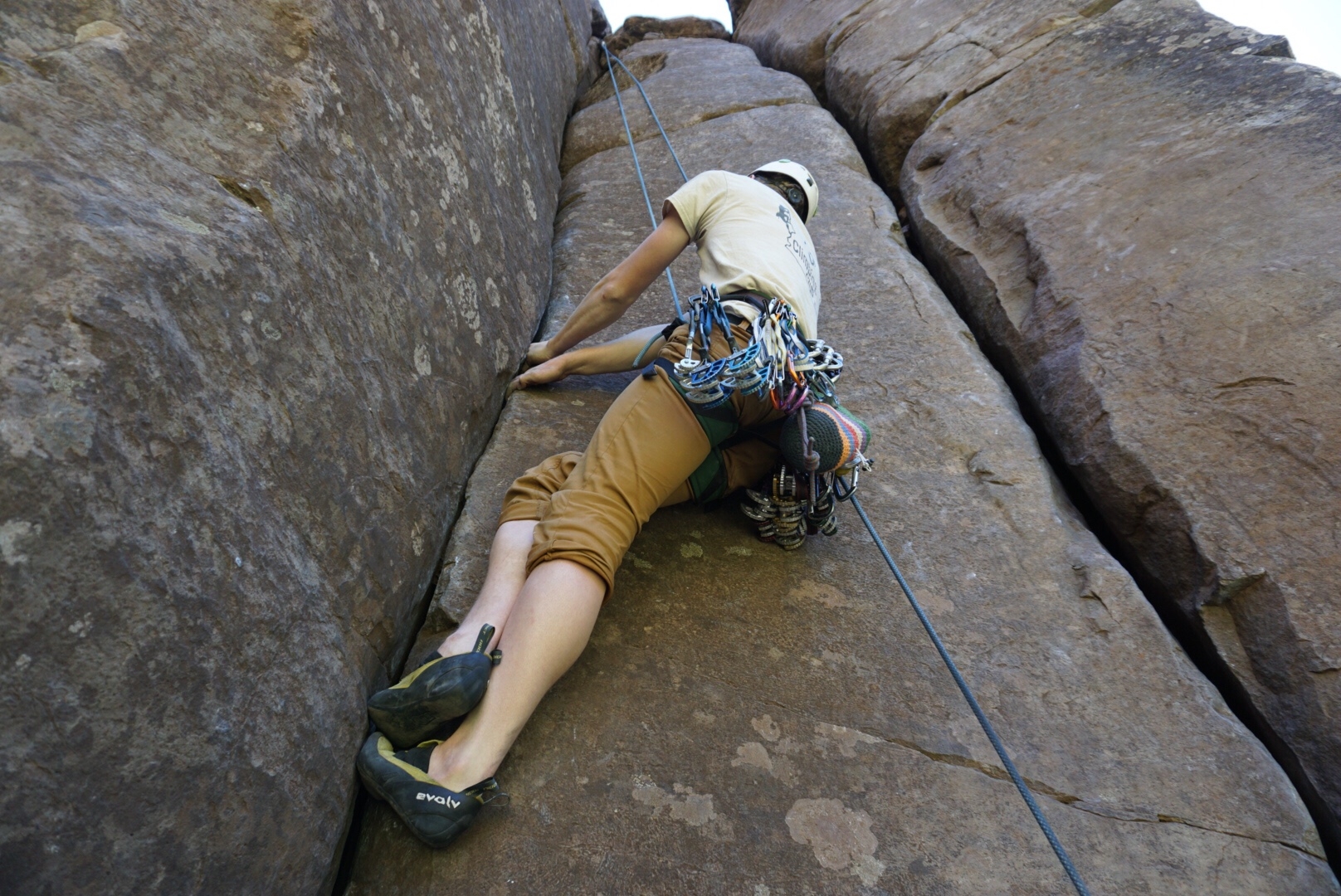
6. Get The Right Climbing Shoes For The Job
Available in climbing gear shops everywhere are purpose built crack climbing shoe. This variety of climbing shoe is never aggressive, instead being very flat. The toe is designed to have a low profile, which allows ease of entry into cracks. These shoes never use Velcro straps, as they just get in the way. Crack shoes are designed to maximize crack climbing and edging effectiveness, while minimizing discomfort.
Crack Climbing shoes generally come in two designs-in a slipper style, or with laces. The classic crack shoe is the 5.10 Moccasym-arguably one of the most popular climbing shoes around. La Sportiva has the Mythos-which features laces, and is another popular option. The important thing when shopping for shoes is that you find a pair that fits you most comfortable. Personally, the author rocks a pair of Evolv Addicts-a budget pair that is sturdy, and often on sale.
We can help you find the best crack climbing shoe for you in our post on the 8 Best Rock Climbing Shoes for Crack Climbing.
7. Practice on Indoor Cracks
If you can, try to find a climbing gym with an indoor, artificial crack. Indoor cracks are some of the best places to learn basic crack climbing technique. Often there will already be a top rope set up, and the gym may equip the crack with a variety of hand and footholds. These make for the ideal situation to run laps, improving your technique and endurance with each go. Sometimes, these cracks will be bolted, allowing you to practice leading after you have developed more confidence.
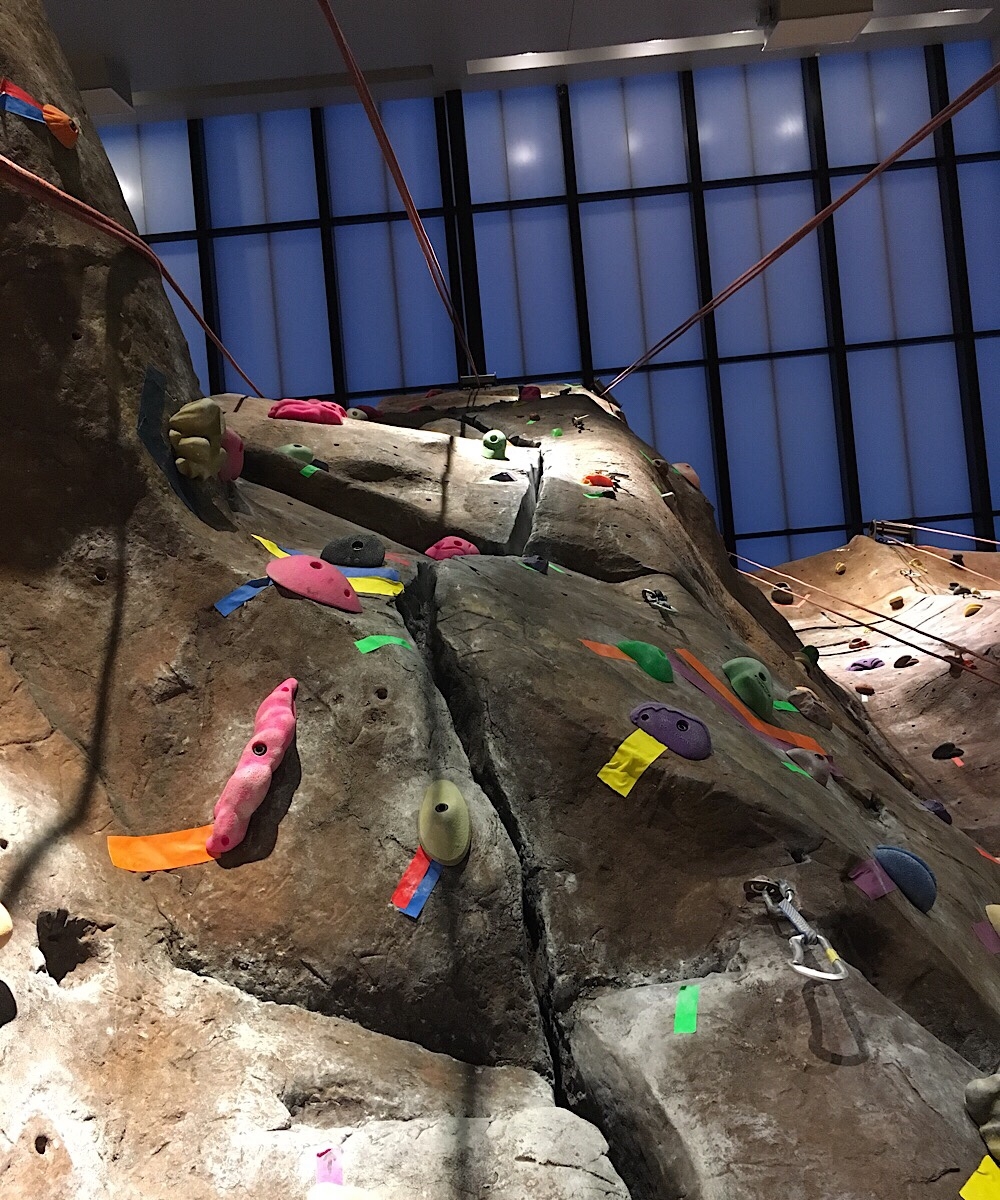
In my opinion, a good indoor crack will not be perfectly splitter. Instead, there will be a variety of jam sizes, from fingers to fists. The crack will not be perfectly straight, and instead will meander and zig zag, forcing you to learn to adapt basic jamming and footwork technique to work in different situations. Ideally, this indoor crack will be textured to mimic real rock. Cracks made from smooth concrete can work, but tend to become slick from regular use.
One technique that I have used to improve my technique on indoor cracks is to climb to an overhanging portion of the crack, find good, sturdy jams and hang my body weight. This will be uncomfortable at first, but if you find you can hang unassisted, then I guarantee that your jamming confidence will be improved.
8. Find Easy Cracks With Plenty of Face Holds
Many of the easiest cracks out there will feature a bunch of faceholds. When first learning, these cracks provide a safe, easy place to practice your jams and footwork. Generally, the lower angle, the better.
9. Learn How to Make Tape Gloves
Tape gloves are a useful tool in crack climbing. This sort of climbing is a painful endeavor. Tape gloves make it a little bit more tolerable. Generally, I would suggest learning to crack climb without gloves at first, just to understand how your hands interact with the crack. However, if the rock is sharp or overly rough, or you are climbing a very long route, tape gloves will make your experience a little better.
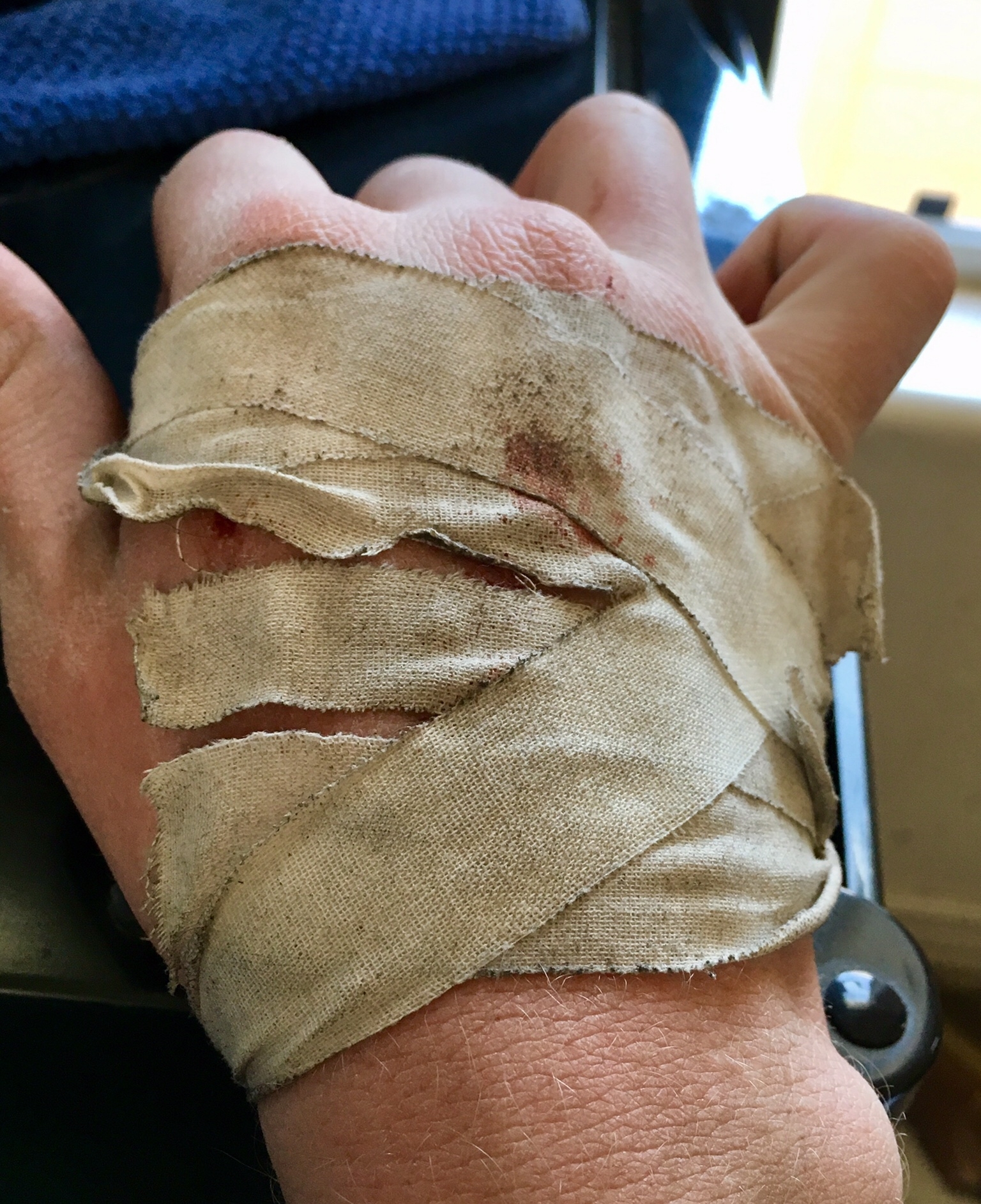
Tape Gloves have the added benefit of making your hands a little grippier, thereby improving your jams. Some climbers will even tape their hands to the point of making them larger, making some fist and offwidth sizes a little easier. Know that if you are using tape gloves for these reasons, other climbers may consider it to be cheating. Instead, only use tape gloves as a tool, rather than a crutch.
Tape Gloves are not the only option. Several companies have made available reusable rubber crack climbing gloves. Most still use tape, but purpose built crack gloves work just as well.
10. Learn How to Place Trad Gear Safely and Efficiently
Every Crack Climb worth its salt will need to led on gear. Supposedly, there exists the anomalous bolted crack route, but this is the exception rather than the rule. If you want to climb crack, then you will need to learn how place and lead on traditional gear. Learning these invaluable skills will open up a multitude of new routes for you. Learning to place gear efficiently will save your butt when you’re pumped out, high above the ground, desperately. Trying for the right gear placement.
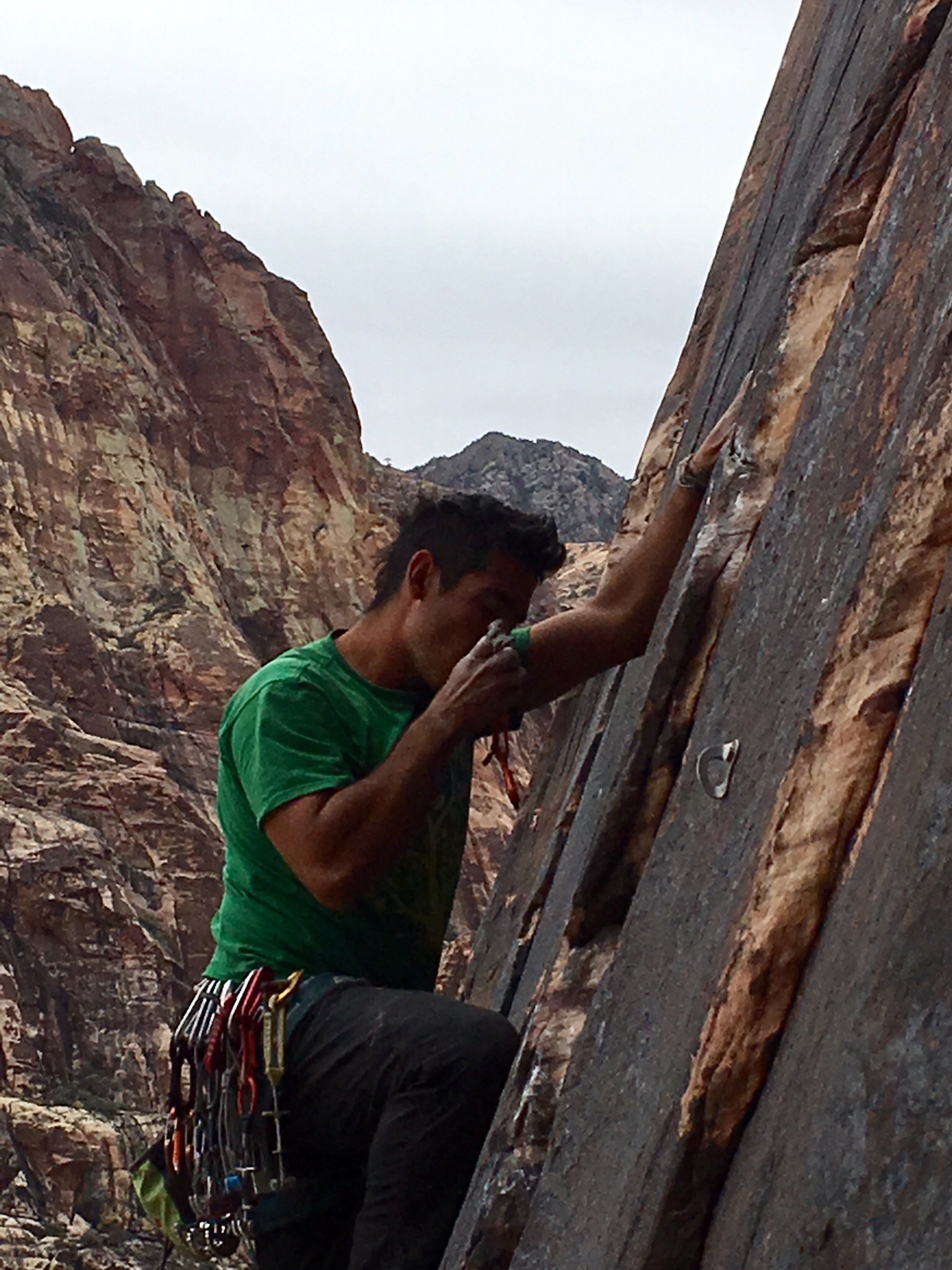
What once used to be the standard school of climbing has now fallen by the wayside in the age of sport climbing, indoor gyms, and competitions. To learn how to climb trad, it is generally recommended to have an experienced mentor guiding you through the learning process. This is considered to be the safest path towards becoming a solid trad climber.
Finding a mentor may be the best option, but it is not the only. I am mostly self taught—using a combination of books, online articles, and YouTube videos to teach me how to safely place gear. I recommend reading Mountaineering: Freedom of the Hills, which will give you a good understanding of the basics. Always have an experienced climber check your trad placements when you are first learning.
For most, the first hurdle to learning to trad climb is the price. There is a greater monetary barrier to entry than to sport climbing or bouldering. First of all, learn to climb on other people’s trad racks. This will let you know if you even enjoy trad before you drop good cash o gear. Once you have learned the basics and feel comfortable, you can begin to purchase some trad gear. I recommend starting with only a few pieces, purchasing one or two at a time until you have a versatile rack. For some more tips on buying trad gear for cheap, check out our article on how to build a trad rack on a budget.
Check Prices for Mountaineering: Freedom of the Hills
11. Read The Crack Climber’s Technique Manual
Nothing beats practice on real cracks in real rock. After many hours of climbing cracks over and over again, I was able to improve my technique to the point where I felt confident on a crack climb. At the beginning of my journey, I needed some direction, and a reference guide to help me learn. That is where The Crack Climber’s Technique Manual came in handy.
The Crack Climber’s Technique Manual: Jamming with Finesse, written by crack master Kent Pease, is a book designed to help new climbers learn how to crack climb, and to teach seasoned crack climbers how to up their grade. You will find techniques to climb every sized crack, with each chapter devoted to a different size ranging from fingers to chimneys. With the aid of hundreds of beautiful photographs, diagrams, and anecdotes, the Crack Climber’s Technique Manual will give you all the knowledge you need to start.
Reading this book gave me the instruction I needed to tie all my crack climbing knowledge together. In a sense, this book bestowed a feeling of confidence to try new jams and positions. Now, I am addicted to crack.
Purchase from Fixed Pin Publishing
Link: http://bit.ly/2vGtuc9

- The Best Campsites Around Big Bear California - February 26, 2021
- Hiking to the Hollywood Sign Via the Brush Canyon Trail - July 13, 2020
- Dirt Cheap Hiking and Backpacking Gear: The Most Affordable Gear on the Internet - July 4, 2020
